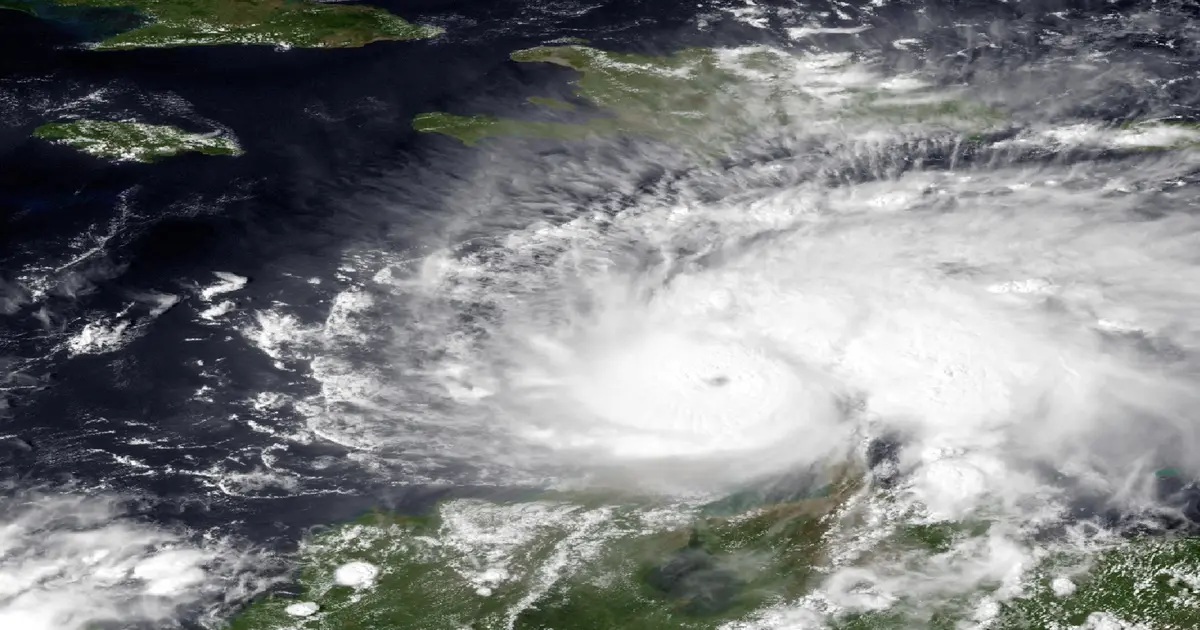Hurricane image credit-pxhere.com
Hurricanes are powerful tropical storms that form over warm ocean waters and can cause widespread devastation when they make landfall. The intensity of a hurricane is measured using the Saffir-Simpson Hurricane Wind Scale, which classifies storms into five categories based on their sustained wind speeds. Each category helps gauge the potential damage a hurricane can cause, from light property damage to catastrophic destruction.
Understanding hurricane categories can help you prepare for storms and assess the risks associated with them. Here’s a detailed look at each hurricane category, along with answers to frequently asked questions (FAQs) about hurricanes.
Read Also-Hurricane Milton Intensifies to Category 4: Florida Braces for Evacuations and Storm Surge
The Saffir-Simpson Hurricane Wind Scale
Category 1: Wind Speeds of 74-95 mph (119-153 km/h)
Category 1 hurricanes are the least intense but can still cause damage. They may result in some structural damage to houses, such as roof shingles being torn off, and cause tree limbs to snap. Power outages are likely due to downed power lines.
Category 2: Wind Speeds of 96-110 mph (154-177 km/h)
Category 2 hurricanes cause moderate damage. Well-constructed homes can sustain more severe roof and siding damage. Trees may be uprooted, and power outages may last for several days due to widespread damage to electrical infrastructure.
Category 3: Wind Speeds of 111-129 mph (178-208 km/h)
Category 3 hurricanes are considered major hurricanes. These storms can cause significant damage to buildings, with roofs and walls potentially being compromised. There may be extensive tree damage and prolonged power outages. Flooding from heavy rainfall and storm surges becomes a serious threat.
Category 4: Wind Speeds of 130-156 mph (209-251 km/h)
Category 4 hurricanes bring catastrophic damage. Well-built homes may lose most of their roofs and suffer severe structural damage. Trees, power poles, and signs will be uprooted or knocked down. Flooding from storm surges can destroy coastal structures, and areas may become uninhabitable for weeks or months.
Category 5: Wind Speeds of 157 mph or higher (252 km/h or more)
Category 5 hurricanes are the most destructive. They can completely destroy buildings, leaving areas unrecognizable. Flooding from massive storm surges can obliterate coastal areas, and wind damage is extreme. Power and water outages may last for months, and entire communities may be displaced.
The Dangers Beyond Wind Speeds
While hurricane categories primarily measure wind speeds, these storms bring other life-threatening hazards:
- Storm Surge: The abnormal rise of seawater due to a hurricane, often causing catastrophic coastal flooding.
- Flooding: Intense rainfall can cause rivers to overflow and flood inland areas, sometimes far from the storm’s center.
- Tornadoes: Hurricanes can spawn tornadoes, adding to the destruction.
- Rip Currents: Strong ocean currents generated by hurricanes can extend far beyond the storm’s reach, posing dangers to beachgoers.
How to Prepare for a Hurricane
Regardless of a hurricane’s category, it’s crucial to be prepared. Here are some key steps:
- Emergency Kit: Ensure you have essentials like water, non-perishable food, medications, flashlights, and batteries.
- Evacuation Plan: Know your evacuation routes and have a plan in place if authorities issue an evacuation order.
- Protect Your Home: Secure windows with storm shutters or plywood, and bring in outdoor furniture to prevent damage.
- Stay Informed: Monitor local news and weather alerts for updates on the storm’s path and intensity.
FAQs About Hurricane Categories
Q: What is the Saffir-Simpson Hurricane Wind Scale?
The Saffir-Simpson Hurricane Wind Scale is a system used to classify hurricanes based on their sustained wind speeds, ranging from Category 1 (least severe) to Category 5 (most severe). It helps estimate potential damage from wind, but does not account for other threats like storm surge or rainfall.
Q: Does a higher category mean a more dangerous storm?
Yes, higher categories generally indicate stronger winds and the potential for more severe damage. However, lower-category hurricanes can still cause significant harm, especially through flooding or storm surge.
Q: Can hurricanes increase in category as they approach land?
Yes, hurricanes can intensify as they move over warm waters, which provide more energy. Conversely, they can also weaken due to cooler waters, wind shear, or land interaction.
Q: What is a “major” hurricane?
A major hurricane is any storm classified as Category 3 or higher. These storms typically cause extensive damage and pose serious threats to life and property.
Q: How does storm surge relate to hurricane categories?
Storm surge is the rise in sea level caused by a hurricane’s winds pushing water toward the shore. While stronger hurricanes (higher categories) generally cause more severe storm surges, factors like the shape of the coastline and the storm’s speed can also influence surge severity.
Q: What is the difference between a hurricane, cyclone, and typhoon?
All three terms describe the same weather phenomenon—a tropical cyclone. The name varies based on where the storm forms: “hurricane” is used in the Atlantic and Northeast Pacific, “typhoon” in the Northwest Pacific, and “cyclone” in the South Pacific and Indian Ocean.
Q: Can a Category 1 hurricane still be dangerous?
Absolutely. Even a Category 1 hurricane can cause property damage, power outages, and flooding. It’s important to take all hurricane threats seriously, regardless of the category.
Q: What should I do if a hurricane is approaching?
Follow local authorities’ guidance. Prepare an emergency kit, secure your home, and be ready to evacuate if necessary. Stay informed through official news sources and weather alerts.
Conclusion
Understanding hurricane categories helps provide insight into the potential damage and risks associated with these powerful storms. However, hurricanes are complex, and their dangers extend beyond just wind speeds. Proper preparation and awareness are key to staying safe during hurricane season, regardless of a storm’s category.
